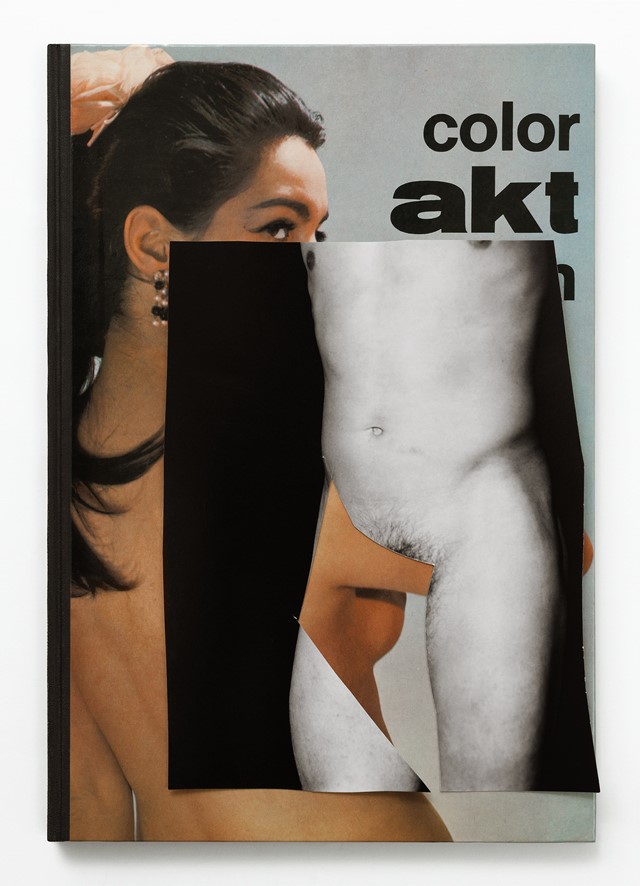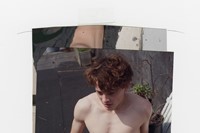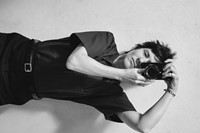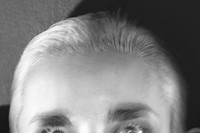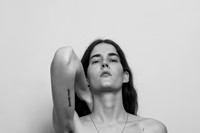“Collage was never a look [for me]. Collage was an intervention”: As her new exhibition opens in London, we sit down with the artist to talk collecting and collaging
After 20 years of making pictures that span fashion, art and collage Collier Schorr’s studio is, predictably, a bit of a mess. “[It’s] small, and in disarray,” she tells me, smiling, before the opening of her new solo exhibition, In Front of the Camera at London’s Modern Art gallery. “It’s constantly being cleaned, and then I do collages for a fashion story, and it becomes a complete hellhole of scraps of paper. And what happens then is that pictures float around and get mixed up and get lost and get found years later.”
Such chaos would be to the detriment of any other artist, but it only serves to augment Schorr’s practice. As fragments of one image cross the path of a photograph, or a photograph of a photograph, or even a favourite old book (such as the portfolio of sweet old erotica found in a suburban German flea market, which features heavily in this new show – see Color Akt, and the The Rape of Rabelais diptych) whole new worlds come into play, filtering out into the emotionally resonant and many-layered works with which the artist has become synonymous.
Now, as In Front of the Camera deftly demonstrates, she’s ready to take this exploration one step further: where recent exhibitions experimented with the possibility of taking fashion pictures into a gallery, this one is much more about studio practice, and “how pictures float around the studio and make connections with one another,” she says – “be it through someone coming into the studio and standing next to a picture on the wall, or a book opening up onto a picture. It’s much more in my head, this work, and much less about the performance.”
It’s a nuanced new perspective on the complexity of working across art, fashion, editorial and commercial projects, and a powerfully pertinent one given that, as the artist writes in the show’s accompanying statement, “I began as a picture collector”. If walking through the exhibition feels seductively like stepping into Schorr’s world – one in which parallel forces crash and collide, evoking new narratives with every crossover – then that’s entirely appropriate. Here, we speak to Schorr about collage, provocation, and the problem with an ‘edit’.

On the role collage plays in her practice…
“For me, collage was never a look. Collage was an intervention, and a secondary text, and a way of breaking up the symmetry of a picture. I always thought of collage as a way of telling somebody that something was going on; it’s a signpost, it’s a warning, it’s a challenge. I never did a collage because I thought it was cool – I only ever did a collage because I was angry, or in love, or frustrated, or I felt that I couldn’t explain what happened in the other 30 pictures that were taken at that moment.
“Part of collage for me was about the fact that in photography, there’s such an idea of the edit, and the picture. You pick the best one – but collage allowed me to say ‘well this is maybe a best one, but here’s a close-up, and here’s the back…’ It’s more of a 360-degree look at something.”
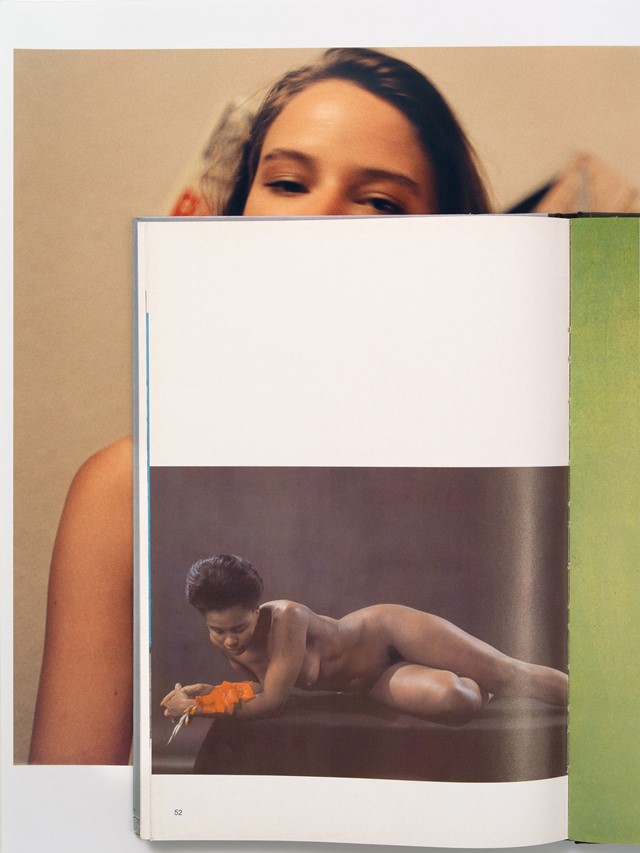
On the importance of provocation in the fashion industry…
“I don’t know if I’m a bruise-presser – and I’m sure there are a few bruise-pressers that are reading this right now – I just think that I feel responsible for every picture. That’s why layout is so important, because I can make one picture that I feel is complicated, if I have another picture in that story that acknowledges it. I just don’t want to make gratuitous pictures, I don’t want to make violent pictures, I don’t want to make pictures that take advantage of people. And I don’t want to upend things just to have upended them. It’s about fashion and it’s about poses, and so there are people who are invested in finding ways of upsetting that – and that’s really good for the industry, it’s good for the history. But I think there needs to be a follow-up to that. It’s not about only reacting against it; it’s also about asking, what does it say, what does it mean?
“But also, fashion photography can be a vacation from all of those things if you want it to! For me it’s just really difficult for it to be a vacation. But I’m not saying that that’s the way it should be for everybody.”
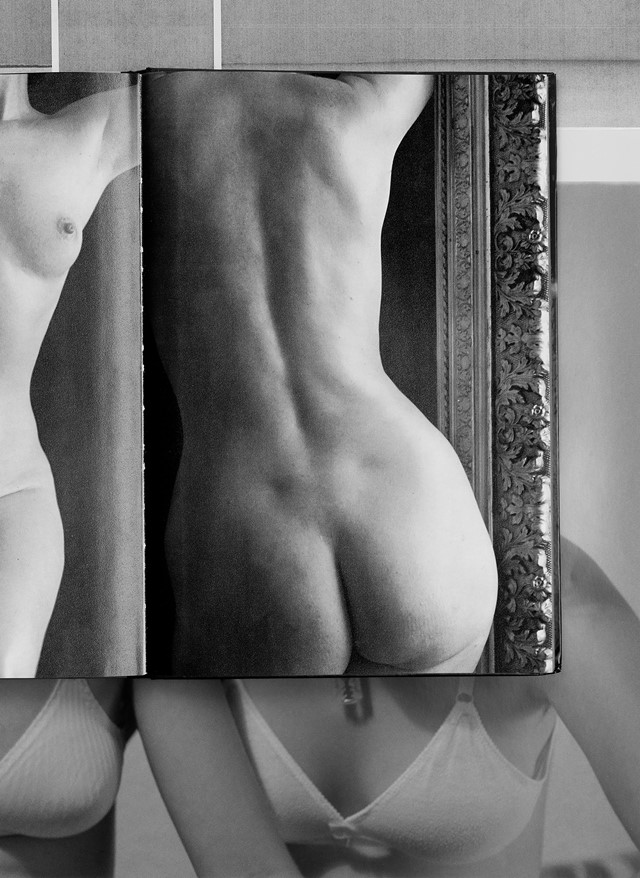
On the perils of pushing models to their limits in the pursuit of new ideas…
“There are so many platforms for pictures now – so many magazines, so many people wanting to make pictures, so much ease in it now compared to what it was like years ago. There are definitely people working today that pose the body in really extreme ways, in order to make new content. What I want to see is still the artistic impulse that’s making a reason for that picture to exist, rather than propelling a model into extreme discomfort.
“In the early days that’s why I took pictures of boys in Germany, pictures of wrestlers in America, pictures of boys in fashion. I wasn’t sure if I had a new picture of women to make, because there were so many existing already. And there was a point when people didn’t really know men pictorially – so it was an exciting time to use all the ways that we were looking with desire at women, and to turn that onto boys. And honestly, part of it was punishment. I did come to it with this sense that I was going to strip men a little bit, make men vulnerable, as a response to all the pictures of women that had been vulnerable.
“I don’t know if I’m at the forefront of making a new image – I just think that I’m maybe the person that is interested in the expression, or the emotional tenor of the picture. And I wouldn’t take credit for making a picture that people haven’t seen. but I would take that credit for making a collage that people haven’t seen. That’s easier for me: I would rather cut a body in paper than open up a body and turn it upside down in real life, for sure. That’s the way for me to disturb the pictorial space.”
Collier Schorr, In Front of the Camera, runs until September 1, 2018, at Modern Art, London
